Concetto Pozzati was born in Vo’ Vecchio in the province of Padua on 1st December 1935. His father, Mario Pozzati was an artist who had emigrated to Argentina to work as an advertising poster designer, and was a friend of De Chirico, De Pisis, Carrà, Guidi, Licini and Morandi, who called him il milionario (the millionaire) because he had made a fortune in the 1920s. His uncle was Severo Pozzati, known as Sepo, active both in France and Italy, and one of the leading advertising poster designers of the first half of the 20th century. In 1942 Mario decided to move together with his family to Asiago (Concetto had an older sister, Chiara, who would marry another artist, Wolfango) where he died in 1947, leaving an unfillable void in his twelve-year-old son and a sense of nostalgia for painting in him which however would not explode until the end of the ’50s, when after moving to Bologna, he graduated in 1955 from the State Institute of Art.
1935

1955
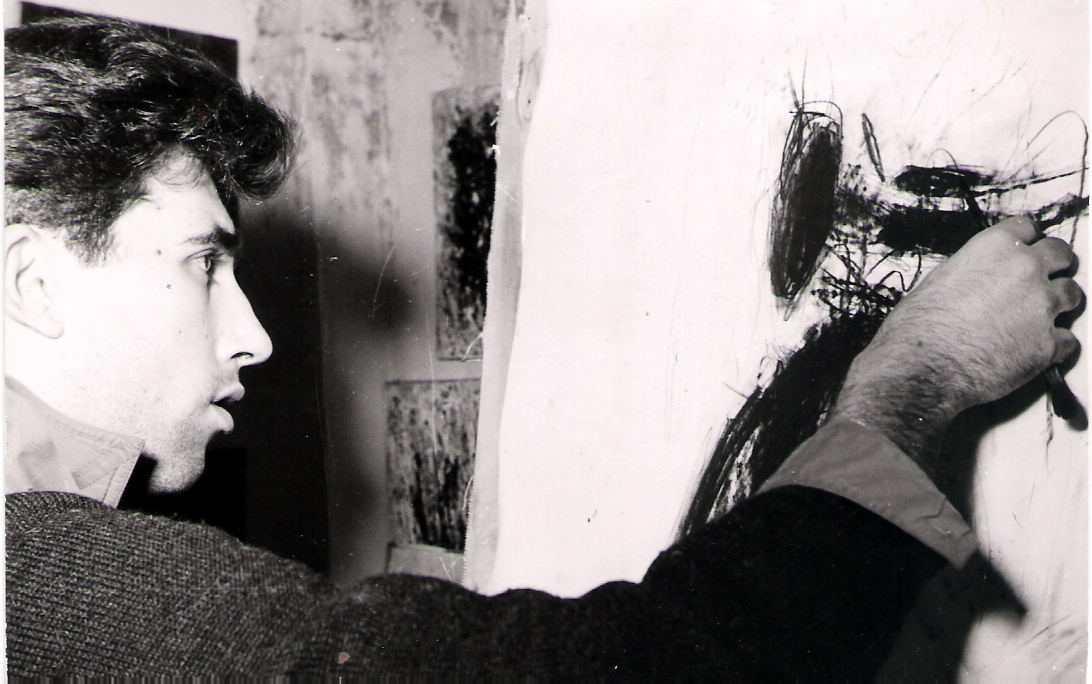
In that period, the artistic climate in the city was dominated by informal art, revolving around the figure of Francesco Arcangeli: theTeste (Heads) that Pozzati paints are endowed with a strong dramatic tension and an existential restlessness, described thus in his writing (which make for fundamental reading for anyone who wishes to get to know his painting): “I prefer faces to heads. The face is a vertical cutaway put together using strokes. Together they show a face: one made up of strokes. The head, on the other hand, is made up of holes, of dark cavities and orifices and calls for matter.”
1959
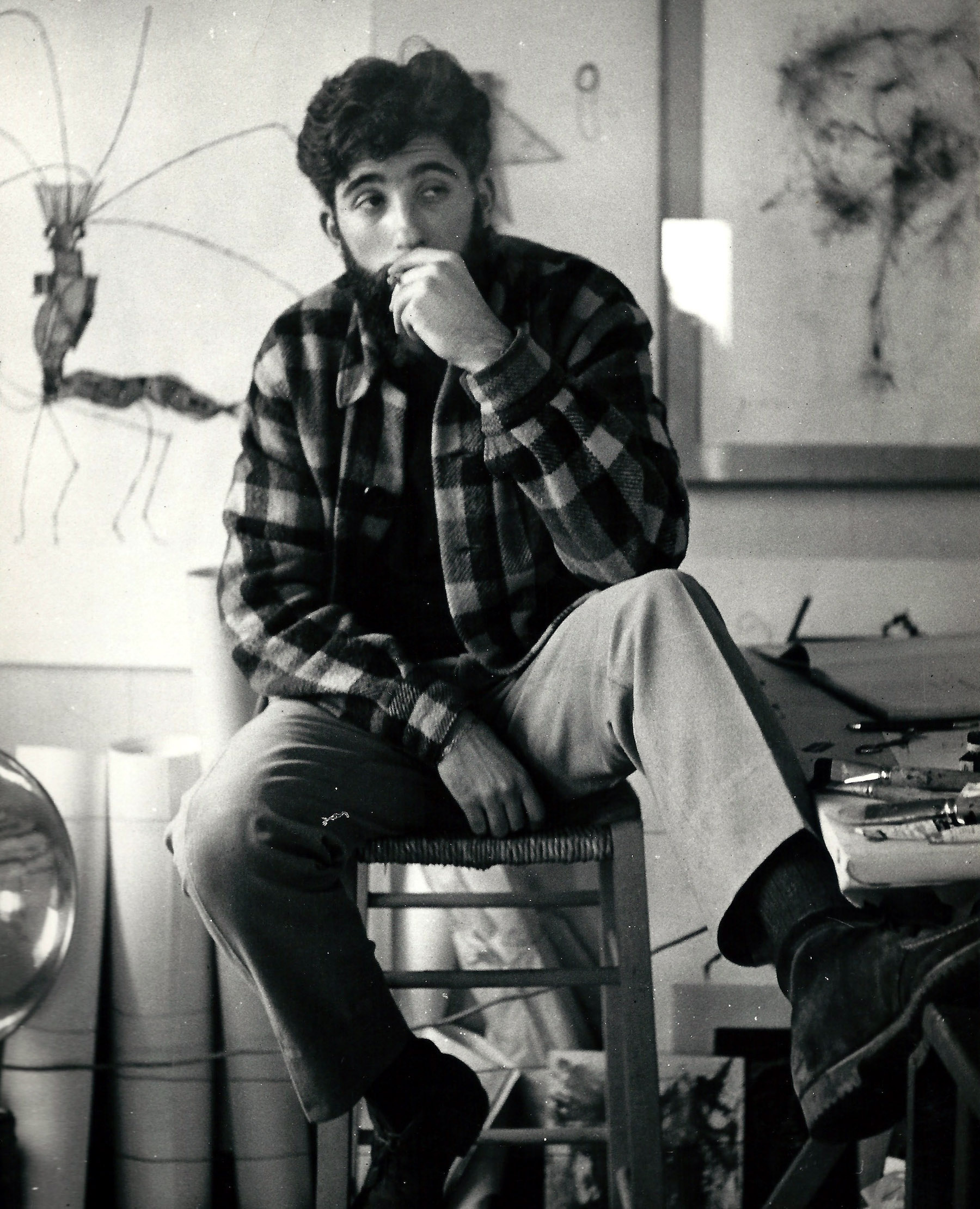
1959 was a major year for Pozzati because it was when he went beyond the city limits and reached the Roman gallery “La Salita”, and the “Annunciata” in Milan, where he met Carlo Carrà, an old friend of his father’s, and Lucio Fontana, who purchased one of his paintings on show. From then on, until 1962, a number of organic morphologies begin to form in his canvases, which express his desire to leave the informal field so as to find an ever clearer definition of the image.
1963

Between 1963 and 1965, the artist was featured at the Biennials of Tokyo, Sao Paolo, Spoleto and San Marino, reaching the height of his popularity when taking part at the age of only twenty-eight at the 32nd Venice Biennale, summoned by Cesare Gnudi and Maurizio Calvesi: a historical Biennale which marked the start of American Pop Art in Italy, consecrated right there in Venice. Shortly afterwards, he received another major international invitation: to participate in the third edition of Documenta in Kassel, where he exhibited in the same room as Jasper Johns.
Concetto Pozzati’s Pop Art has its own peculiarity, which is sensed above all in the definition of the space and the placement of the objects, appearing in rows and becoming icons of contemporaneity. In an interview published in Bolaffiarte in 1976, when asked “What did Pop Art entail for your generation?” Pozzati replied: “Focusing on the concept of commodification. We understood that a form of art was a product like any other: it was just goods. However, unlike the Americans, for us it was never a matter of glorifying the goods, but if anything the awareness of reducing art to the level of goods… I understood that private images not only clashed with public/billboard images, but that the public and the private had swapped roles. For example, the pear (the one from the Derby pera [Derby pear juice] poster), once it had been used by me became the “pera Pozzati” (Pozzati pear). The product brought together a whole series of linguistic contradictions.”
1967
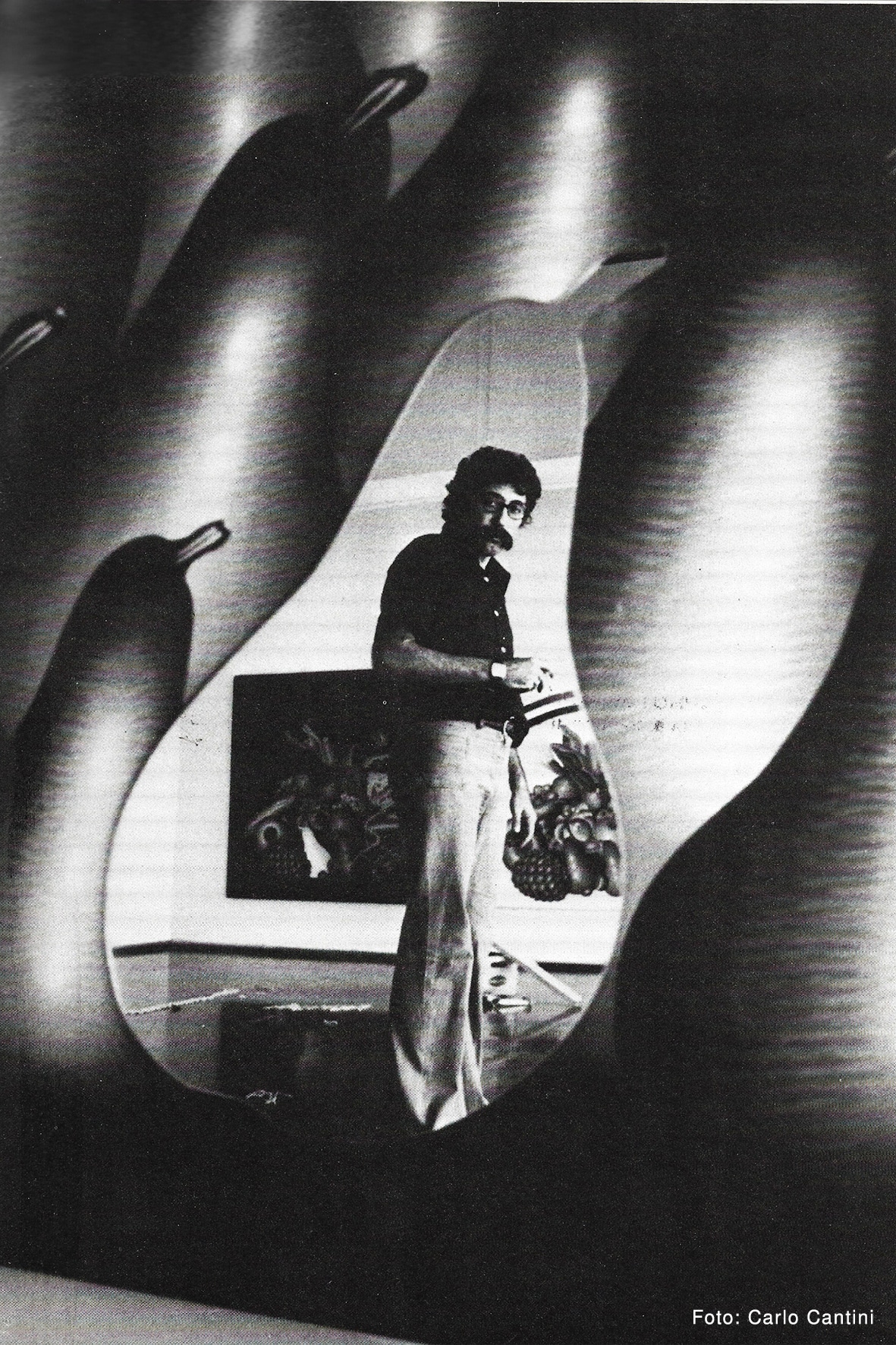
Post-1967, a new element appears in Pozzati’s paintings that dialogues with his work: the mirror. And so here we have the outlines of pears and tomatoes in the shape of mirrors, providing the onlooker with the image of him/herself in the act of looking along with the surrounding environment, as if to underline the twofold nature of painting, made up of fiction and nature, of manual skill and mental intervention. In an interview with Tommaso Trini in 1973 he states: “It’s reflective glass, a mirror of course, i.e. glass silvered by hand. I chose it on purpose, fully aware of its fakeconsumption, of the fact that in three years’ time it will be less shiny, that in ten years it will have little holes in it and in fifteen years it will be old… What was it? It was the pear that became the regardeuse, meaning it was the pear looked at which at the same time contained other images looking at it. Yet at the same time it was also an image looking at itself.”
The years from 1967 – when Pozzati began teaching at the Academy of Fine Arts of Urbino (teaching was to become an extremely important activity for him, carried out with great passion and dedication firstly in Urbino, then in Venice, in Florence and lastly in Bologna, where he was to hold a post as professor of painting) – to 1972 marked the most desecratory period of his work.
1972

Pozzati the ironic, Pozzati the “robber”, Pozzati the “peeping Tom” are all labels given to him by the critics who followed the artist’s career most closely (Guido Ballo, Enrico Crispolti, Giuseppe Marchiori, Roberto Sanesi, Tommaso Trini and Alberto Boatto), over the years between 1973–1976, those of received ideas and restoration (let us not forget that in 1972 Pozzati displayed at the 36th Venice Biennale and the 10th Rome Quadriennale, and in 1974 he staged a major anthological show at Palazzo Grassi in Venice, which became a chance for critics to gain an overall understanding of his discourse on painting). Of himself, in the catalogue of his one-man show at the Palazzo delle Esposizioni in Rome in 1976, the painter says: “Robbery, the freedom to steal that I lay claim to (with a certain spirit of adventure, Marchiori defined me as the ‘corsair of painting’) was not a loan or plunder, but the critical use of an arsenal put together to serve, to be used. USING IS DOING.”
1977

In his new works from 1977 to 1979, Pozzati would include personal elements, private images, traces from the sphere of memory: once more the dual nature typical of the artist, midway between personal memory and historical memory, between private and public history. This was the start of his cycle Fuori dalla porta (Out of the Door), in which old photographs, sketches, envelopes and postcards are coated in coloured vinyl glue, making them turn yellow prematurely.
1980

Only to come to Dopo il tutto (After Everything), the title of a famous work of his from 1980, about which he writes: “After everything, where everything floats, where everything is the same because everything has been done because everything can be done, because there is no desire to chase after or plan for the future. An inventory of the end, a catalogue on the non-difference of signs and images.”
For Pozzati, his back to basics in the ’80s meant going back to being a painter first and foremost: this is testified by the huge painting for the Venice Biennale in 1982, made up of five panels hosting a heterogeneous repertoire of historical and artistic citations, in a vertiginous narrative hyperbole that absorbs all kinds of models in order to possess them with an ironic and disenchanted affection. This was followed by the cycles Ellade (Ellada), a return to classical art, to the great myth; Pani di pietra (Stone Loaves) and A che punto siamo con I fiori (How Are the Flowers Coming Along?), one of his most beautiful and intense cycles, in which his use of paint material grows in ordered thicknesses: Pozzati’s flowers are “lost flowers, motionless, exiled, beyond nature. Flowers without moods, regrets or modifications but just simulations and pretexts to paint painting,” writes the artist.
1990

1990–1991 was the time of the cycle Impossibile paesaggio (Impossible Landscape), displayed for the first time at the major anthological show in 1991, held at the Galleria d’Arte Moderna in Bologna – the first to be dedicated to him in the city where he lived, taught and painted, and where furthermore he served as Councillor for Culture from 1993 to 1996.
The ’90s came to a close with a dramatic cycle: a sense of powerlessness and loss permeates the Sentinelle dal becco avvelenato (Sentinels with a Poisoned Beak), and with the turn of the century, Pozzati feels ever more ill at ease in the globalised world. He distrusts forced socialisation, hit-and-run communication, and knows he needs slowness, silent unrest: this is what we are told in the cycles Il pittore burattinaio (The Painting Puppeteer, 2002), Torture (Tortures, 2004) and Deposizioni (Depositions) in 2006.
2006
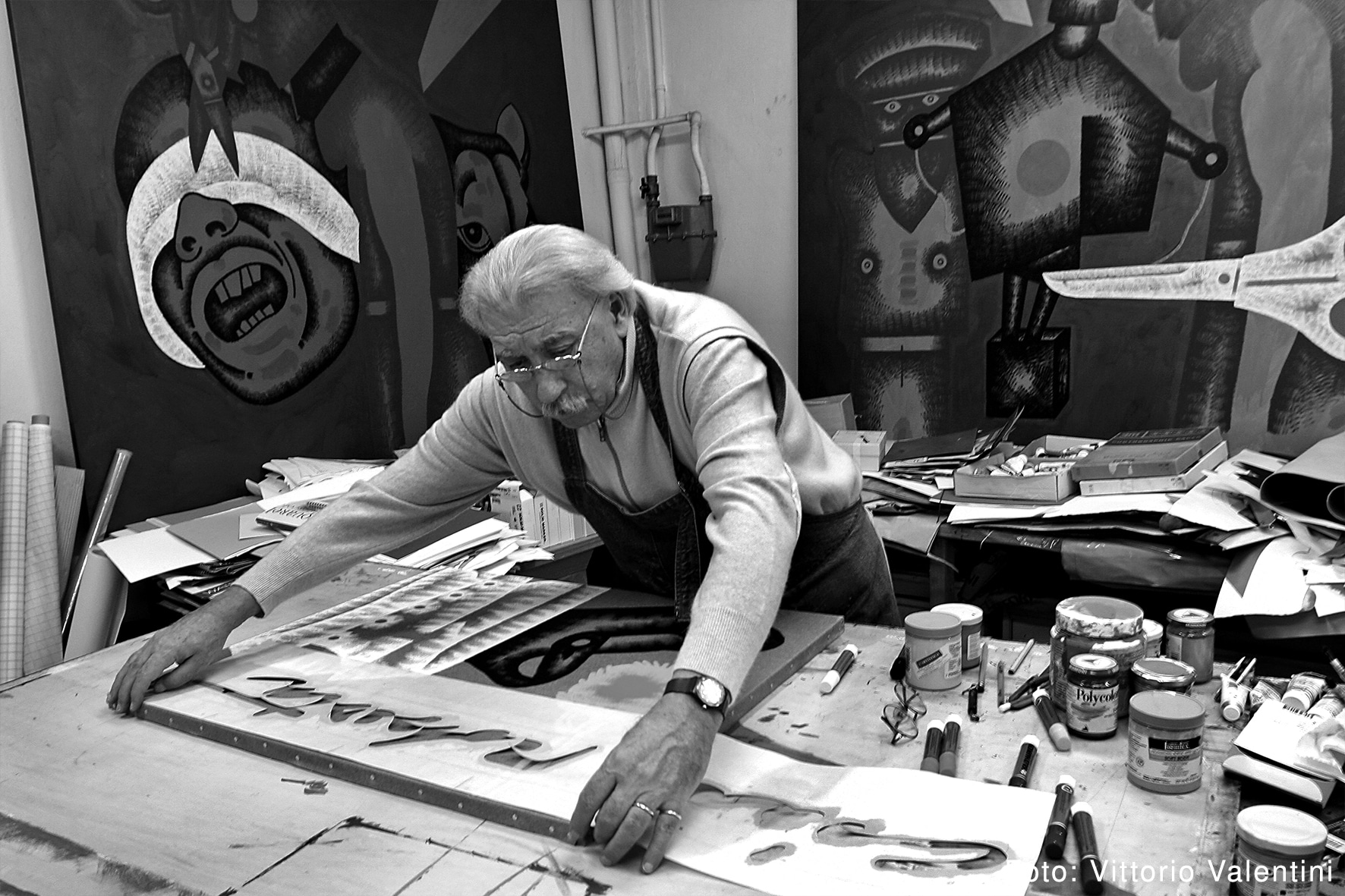
2006 was a dramatic year for the family because after a long illness, his wife Roberta passes away. She had been his lifelong companion, the woman that followed the family economy and all practical matters, and who would accompany him on all public occasions. Concetto dedicates one of his most beautiful and luminous cycles to her: Ciao Roberta (Goodbye, Roberta), an affectionate investigation of personal objects, her slippers, her wonderful hats, clothes, bags and shoes, floating against a background of grey canvases, unleashing both a light and a lightness that cannot be found in any other work of his. On this cycle the artist writes: “The paintings are soft, not mournful. They are bright because everyone has a colour of their own within them, and the clothes my wife wore, the way she dressed was a way of being: subjective and as intense as a “second skin”, like the shining white of her outlook. I didn’t ask for anything spectacular or sensational. I saw and I recalled the things of yesterday through the eyes of today. Things about your life companion need to be said and painted with modesty and silence, intertwined and infected with solitude. Thus there is a private re-appraisal that stands in contrast to a globalised public element, a private element that painting guards over. Paradoxically, the silent paintings produce an echo which is “full of emptiness”, an intimate and hidden depth in which I can take shelter. I have always wanted to plan things ahead; now I would only like to hand things down.”
2007

After a year, he produced a new cycle focusing on personal objects titled A casa mia (At Home): an inventory of his own things, found in the wardrobes, kitchen, bedroom and living room of his own home, an “invitation to come and visit me, to discover my hidden side.” Here there is another moment of existential solitude which finds a silence and intimacy in this cycle expressed by a painting which is ever more mindful of details and of the little things of everyday life.
With Tempo sospeso (Suspended Time), Cornice cieca (Blind Frame) and Quasi dolce (Almost Sweet) (2008, 2010 and 2011), Concetto Pozzati returns to his Pop colours, the strong light blues, the fluorescent pinks and reds, the canary yellows emerging from against a leaden background. The objects thus appear suspended: “The time of still life encounters that of painting, that of painting with time, an executive time, a time for doing.”
2012
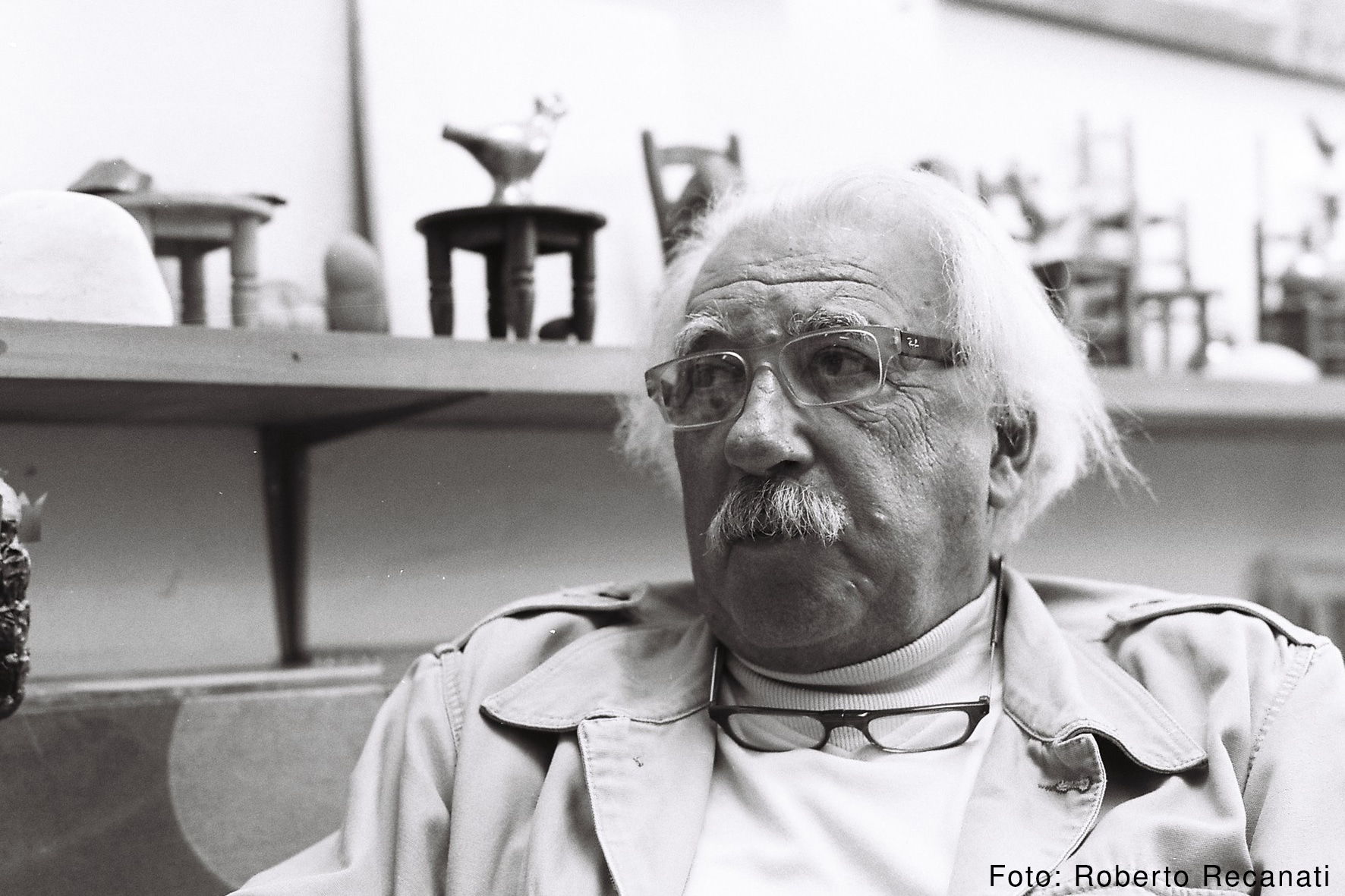
Against the speed of globalised time, of rapid and standardised communication, the cycle Occupato (Engaged, 2012) emerges: the paintings feature nothing but old phones with a handset, as if to wish to underline the incommunicability of painting, its untransmittable nature: “So many phones and so many communications, so many words without lines. So many intertwinings, so many engaged tones. I would like to ex-communicate rather than communicate; a communication which is all the same in the flow of information,” writes the artist.
2014

Sotto chiave (Under Lock and Key, 2014), a cycle all about keys, which Concetto looks upon as important objects: he has lots of them in his studio, old heavy ones made of iron, which he sees as lucky, like horseshoes: “I’m notoriously very superstitious, and keys are my good luck charms, or at least a reflection of the closed-open-closed dialectic.” This is a time when the artist is unwell: having had heart problems, he then has kidney troubles, and despite being operated on several times, he continues with his exhibitive, publishing and cultural activities at the Academy of San Luca in Rome (where he had been a teacher since 1995 and an academic advisor since 2005).
2015
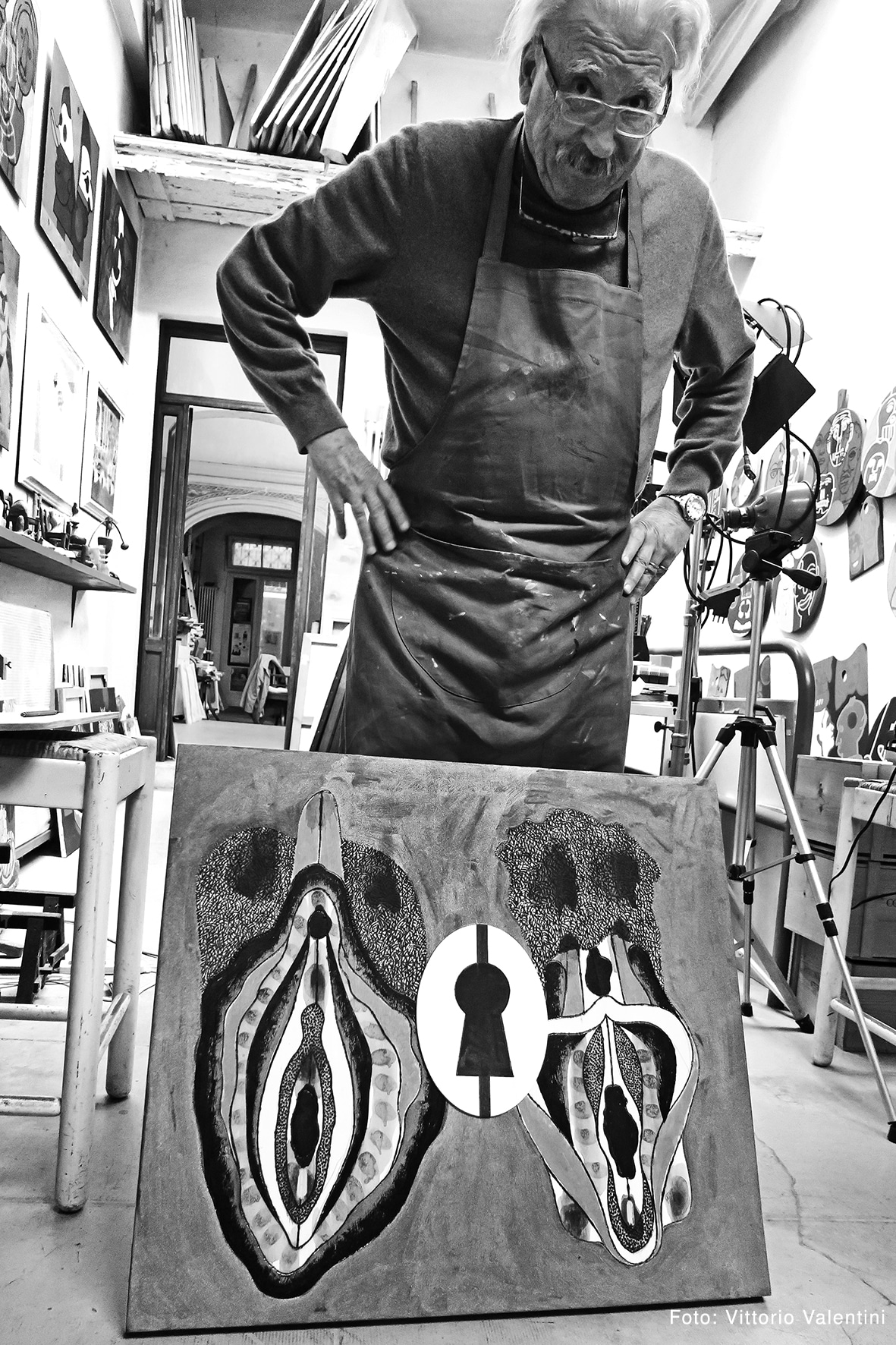
At the end of 2015, he began his last cycle, Vulvare (Vulvar): a homage to the origins of the world, to the vulva-vagina: the last paintings by the artist are all with the same flesh-pink background or coarse canvas, on which immense vulvas are presented as flowers or fruits, thanks to a stylisation process reminiscent of his work of the 1970s in their orthogonality and essentiality. Concetto Pozzati’s last writing ends with these words: “She, that thing, may be deployed through painting, and the carnality of painting itself becomes the vulva of desire, getting lost in the warm, pink abyss…Perhaps coming closer to it and getting lost in it, like in L’Origine du monde from 1866.”
2017
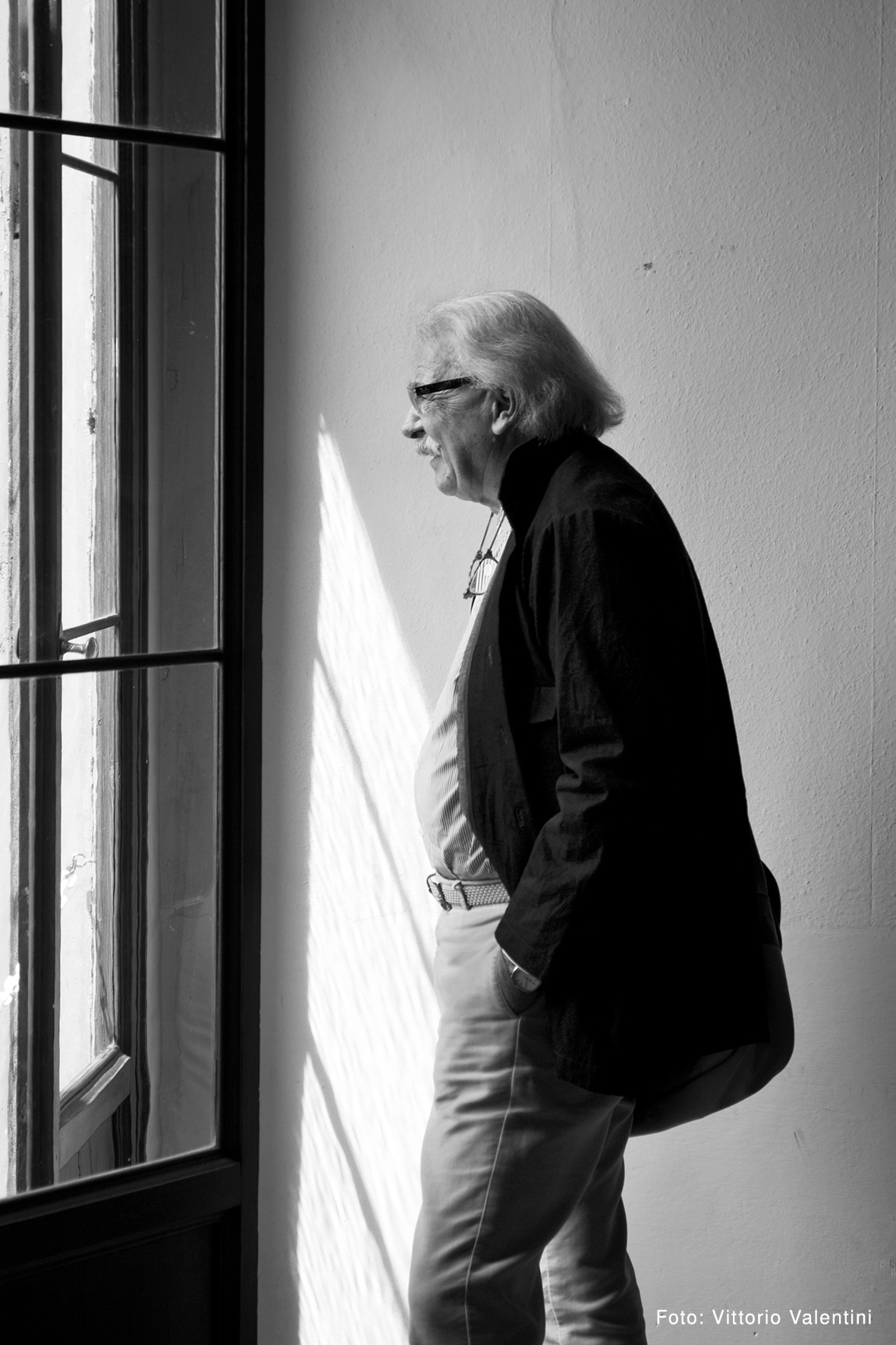
Concetto’s life was one dedicated to painting, and even a few days before dying, he talked about work, planning shows and compiling a new book on artists’ writings, meeting artist friends and intellectuals. He died on 1st August 2017, in his own bedroom in Bologna, surrounded by the affection of his children Maura and Jacopo, and with the paintings by his father Mario hanging on the walls.